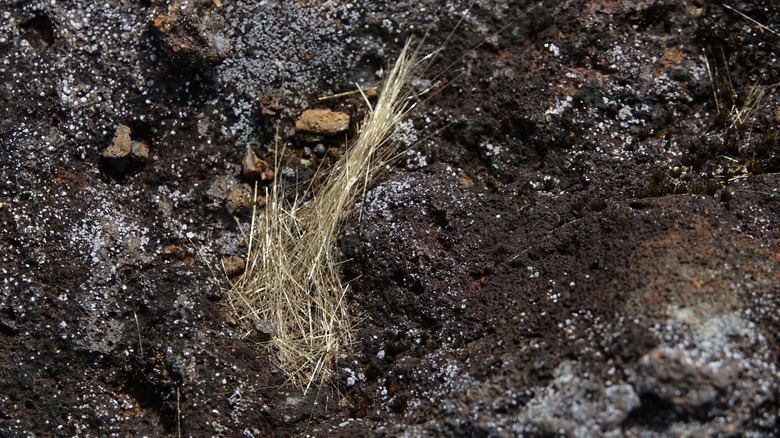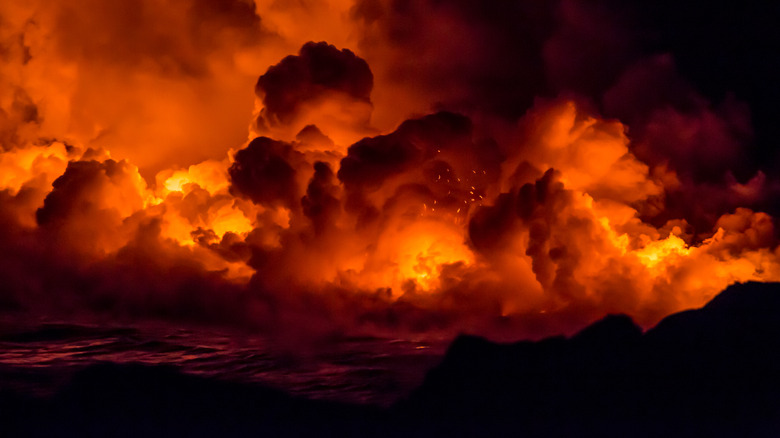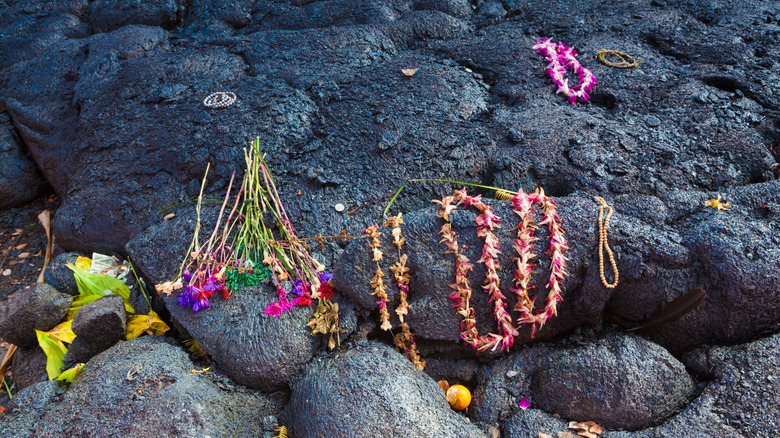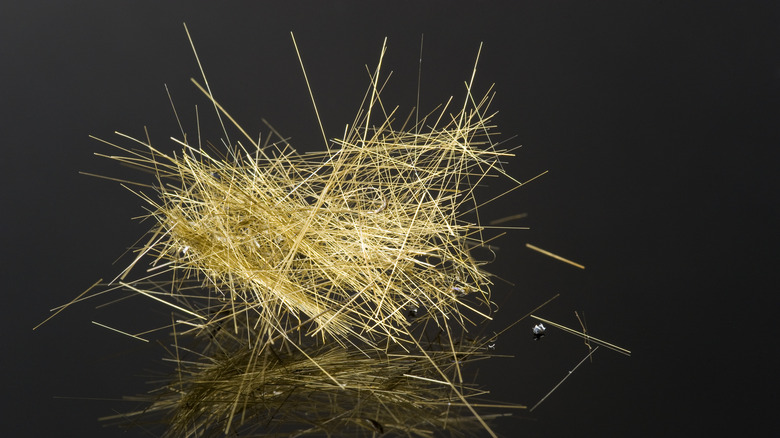The Incredible Way Volcanic Eruptions Create Hairs Of Glass
In recent times, humans have made incredible advances in science and technology. From injectable nanobots to flying cars, it can sometimes feel like the sky's the limit. However, nature continually finds ways to humble us and remind us of our smallness. This often comes in the form of beautiful and terrifying things, like volcanic eruptions.
While scientists have attempted to find ways to predict volcanic eruptions, the reality is that we're still at the mercy of nature's whims. From creating new lakes to destroying entire civilizations, volcanic eruptions have shown us the cycle of destruction of creation and destruction in its most primal form. In fact, when it comes to volcanic eruptions, you may be lucky enough to see one of its most beautiful (and rare) creations: Pele's hair.
According to the United States Geological Survey (USGS), Pele's hairs are strands of volcanic glass that are formed through a rare series of events and under specific conditions. Here's how.
How is Pele's hair created?
Part of the tephra family, Pele's hairs are solid particles that are ejected from an erupting volcano. Most tephra particles are typically categorized by size, which often indicates how dangerous they would be if they slammed into you while you were running away from an eruption. However, because of their unusual features, Pele's hairs can't really be classified in the same way.
For example, Pele's hair can be up to three feet long and 0.04 inches wide, which would have made it the equivalent of a magma block. Similar to ash, Pele's hair structure allows it to move freely in the wind and can travel much longer distances.
To be able to achieve its delicate appearance, blobs of molten lava have to be thinned into strings. Afterward, these thread-like strands become volcanic glass once exposed to air, but only if it is cooled at just the right speed and temperature. If the molten lava cools too fast, it's possible that the glass breaks before it forms.
Alternatively, if the melted rock is too fluid, the molten lava may take on a more spherical shape when it cools. In 2021, Science Direct published a study on Pele's tears, which are tear-like versions of Pele's hair that form due to surface tension and a slow enough cooling rate.
The cultural significance of Pele's hair
While the conditions to make Pele's hair are rare and precise, it has been found in various countries around the world, such as Nicaragua, Italy, and Norway. Depending on where it is found, Pele's hair is already referred to in other ways, such as "Nornahár" or witch's hair in Iceland.
However, Pele's hair is particularly meaningful for Hawaiians. In fact, the beautiful golden-brown fibers are named after Pelehonuamea or Pele, the Hawaiian goddess of volcanoes. In Hawaiian culture, Pele is believed to live in the Halema'uma'u crater, located at the top of Kilauea. Revered as the creator of Hawaii's landscape, she is also referred to as Ka wahine 'ai honua, the woman who devours the Earth (via the National Park Service).
Amid the Mauna Loa volcanic eruption, USA Today shared how Native Hawaiians continued to find spiritual connections with their sacred land and visited the lava to chant (oli), pray, or leave hoʻokupu (offerings) in 2022.
The dangers of Pele's hair
If you do find yourself near Pele's hair, you may want to consider not touching it or breathing anywhere near it. Unfortunately, National Geographic shares that volcanic ash, which contains volcanic glass, can enter almost everything from your computers to your car engines, causing severe erosion and machines to malfunction.
Because of its tiny particles, volcanic glass can scratch delicate parts of your body, such as your skin and eyes. For this reason, USGS recommends wearing respiratory protection, such as an N95, to avoid inhaling the particles that can cause mild discomfort or long-term damage to your lungs.
In 2018, Scientific American also cautioned how Pele's hair could contaminate water supplies. Because of their small size, Pele's hair can't easily be filtered by average catchment systems. With this, people or animals who rely on rainwater for drinking could be at risk of accidentally consuming it and damaging their internal organs.



